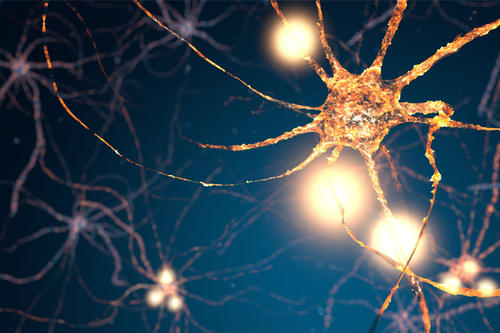
Evolution has given humans a neural center—located in the lower, “reptilian” part of the brain—that governs pleasure-seeking behavior.
However, says Mark Thomas, an associate professor of neuroscience and director of the U of M Center for Addiction Neuroscience, “while this center directs our activity to beneficial goals like nutritious food, it can be usurped by outside experiences and chemicals.” Drug addiction, for example.
But our brains also have a higher, more reason-driven center that exerts some control over the lower one—and our impulses. What if that communication pathway could be manipulated to control relapse into addiction?
Thomas studies the neural connection—the “microcircuit”—between the two neural centers in order to learn how modifying its strength could switch off the impulse to relapse. He discovered that stimulating the microcircuit in mice addicted to opioids usually dampens their drug-seeking behavior.
The human connection
Thomas’ colleague Kelvin Lim, a professor of psychiatry, has used fMRI scans to predict who is more likely to relapse, and with Wei Chen in radiology, they are testing to see if the same holds true for mice.
“We can study the fMRI patterns before, during, and after drug addiction, as well as just before and after relapse,” Thomas says. “This work could lead to a way of interrupting addictive behavior at an earlier stage.”
Thomas and Lim are also recording brain activity in humans with and without drug addiction as they perform decision-making tasks, in search of a connection between brain activity and performance. Thomas will test whether altering microcircuit activity to match that of high performers can lead to healthier brain functioning.
Thomas calls his work “a tool to define brain circuit targets for stimulation or anti-stimulation” to prevent relapse.
“There are ways to do this noninvasively,” he notes. “Maybe someday we can even use ultrasound.”
- Categories:
- Health




